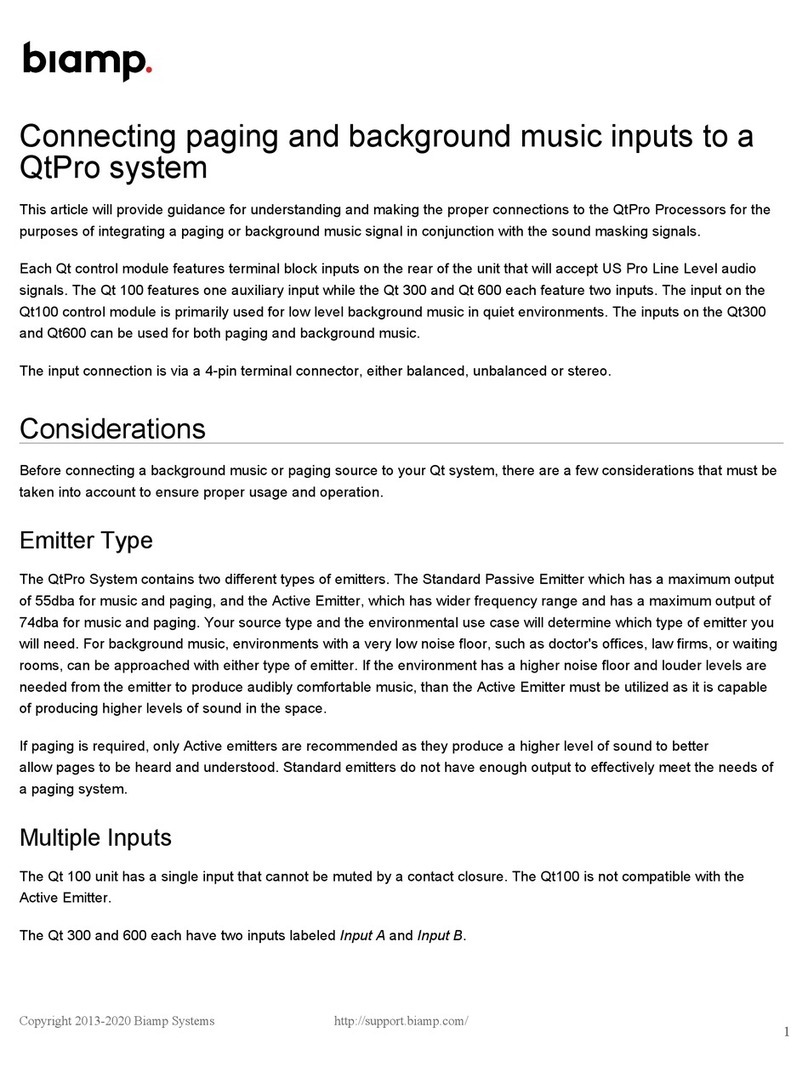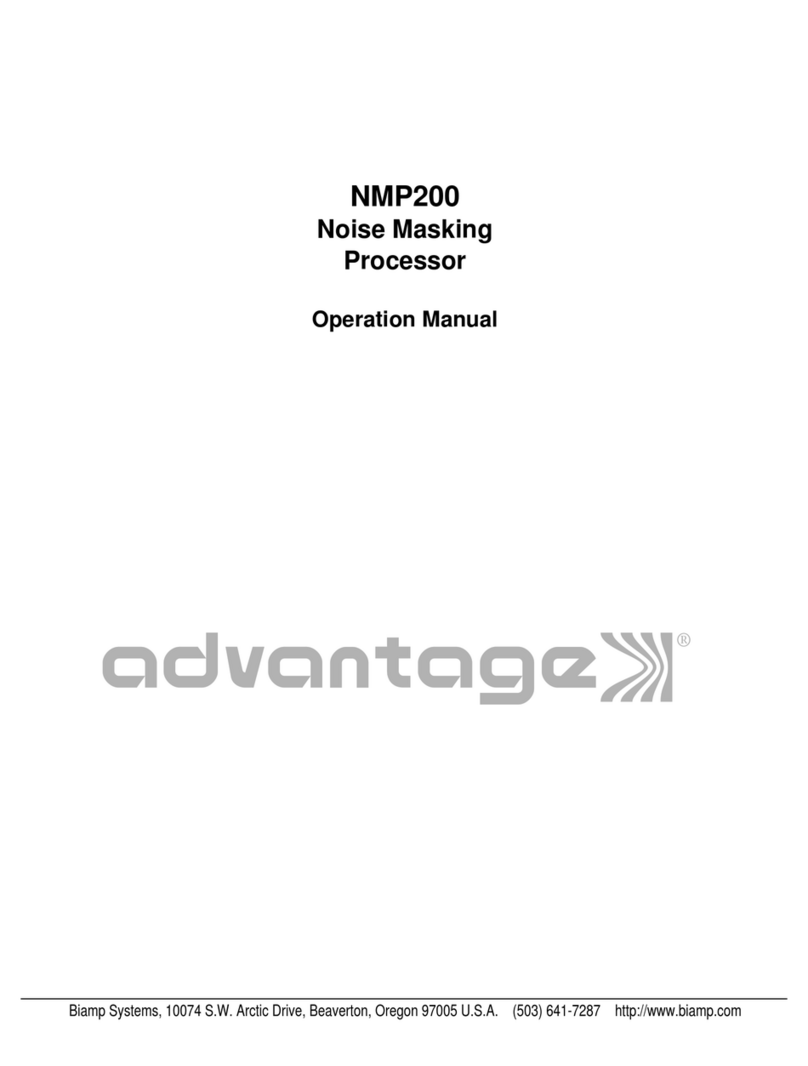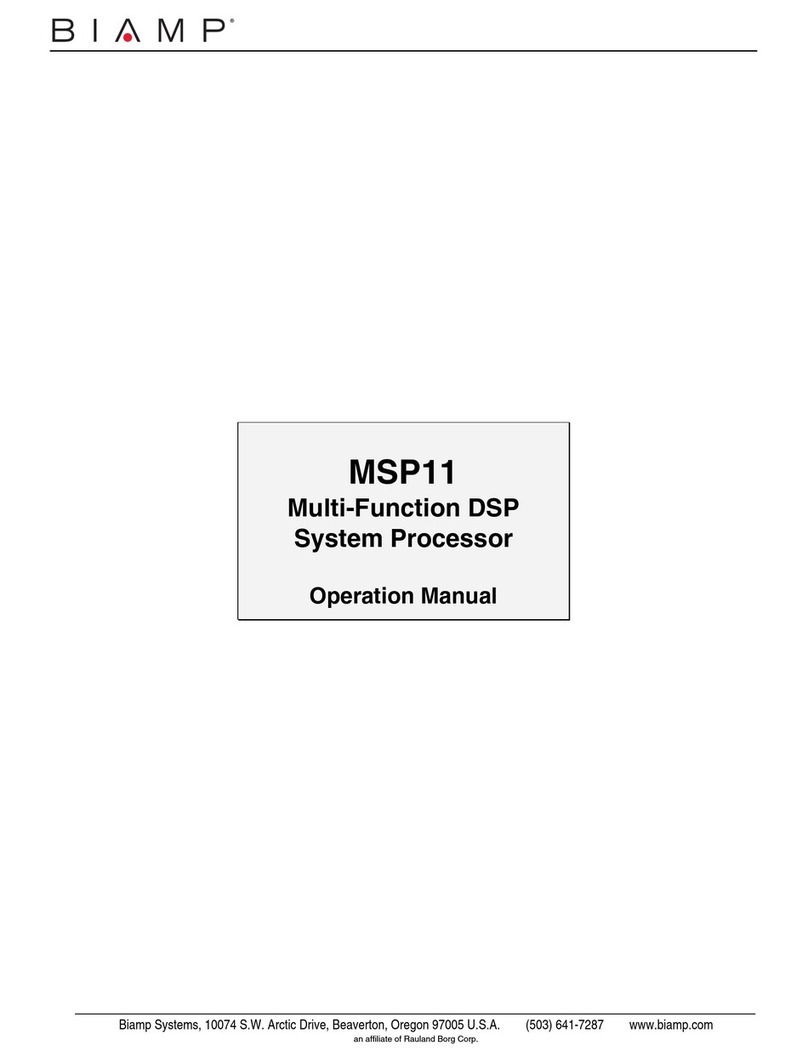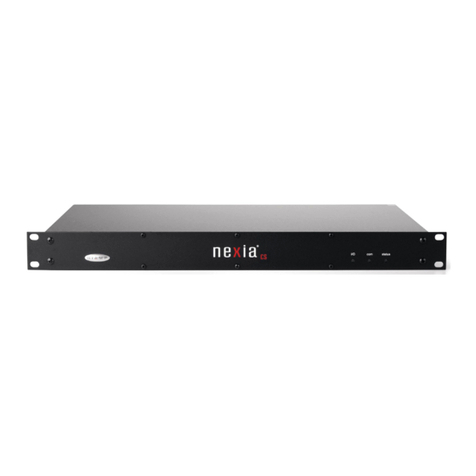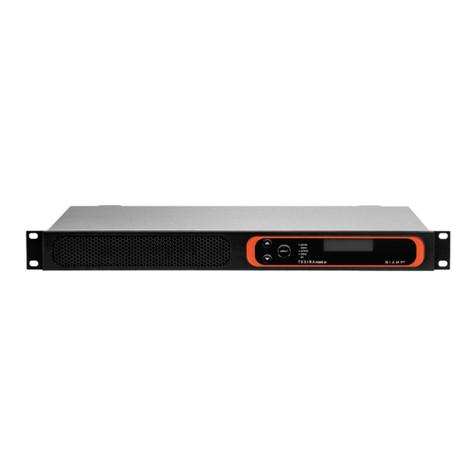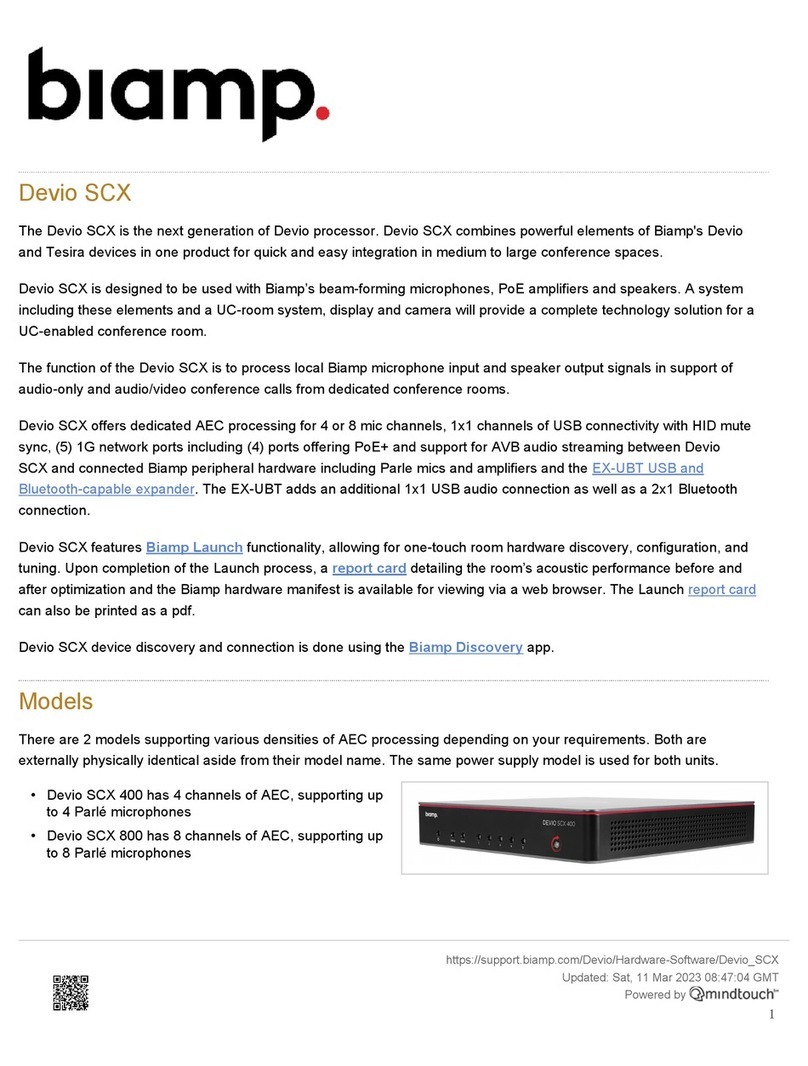
4. Divide the total PoE budget by "Max Power From Switch" figure. The result will show how many PoE devices the
switch can power.
5. Make sure the PoE class is supported on the needed number of ports. **
*When planning the PoE budget of switches, it is important to distinguish between the “Max Consumption” and
“Max Power From Switch” values. "Max Power From Switch" shows the actual power that the switch port may
have to deliver so the endpoint PoE device still receives sufficient power after line-loss in the 100m cable.
The Tesira TCM-1A and AMP-450P are 802.3at Class 4 devices with built-in amplifiers and will draw the
maximum power available from the switch port during heavy workloads or while recharging the power reserve.
Budget the full 30W per switch even though they may only draw 7W from the switch in an idle state.
Note that some manufacturers provide a maximum power value for devices which is lower than the maximum as
defined by the PoE class. For example, a device may be classified as 802.3at Class 4, but has a maximum draw
of 16W as opposed to 30W. Adjust the maximum power figure of 16W by adding 16% to account for possible line
loss. This is the “Max Power From Switch” for this device.
** Even if it’s calculated that 380W of PoE budget on the selected 24-port switch is sufficient to power 12 x Class
4 endpoint devices, the switch specifications may have a maximum of 4 ports that support 802.3at Class 4.
Therefore, only 4 x Class 4 devices may be connected to the switch as per the manufacturer’s specification.
Example calculation
1. Extreme Summit X440-G2-24p total PoE budget is 380W.
2. Biamp Tesira TCM-1A microphone is 802.3at Type 2 Class 4.
3. "Max Power From Switch" for 802.3at Type 2 Class 4 is 30W.
4. Dividing 380W by 30W yields 12.67. That means that a maximum of 12 x Class 4 devices can be powered by
this switch.
5. Extreme Summit X440-G2-24p can support 802.3at Class 4 on all 24 ports. Therefore the above result of 12 x
TCM-1A microphones per switch is the allowable device count for this switch.
In the above algorithm, it is assumed that all connected endpoint PoE devices are of the same model. In real-world
scenarios, it may be necessary to connect devices of different models and different PoE classes to the same switch. To
simplify the calculation in this case, the online Tesira PoE Power Budget Calculator may be used.
Tesira PoE devices
Use the chart below for reference information on PoE classes and the maximum power draw of Biamp Tesira devices
(listed in alphabetical order):
Copyright 2013-2020 Biamp Systems http://support.biamp.com/ 2






